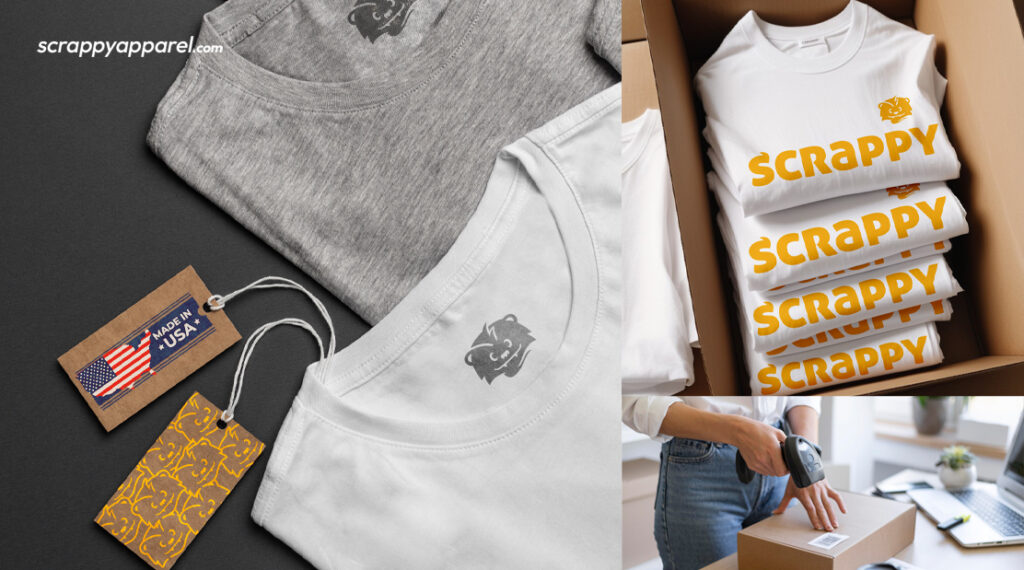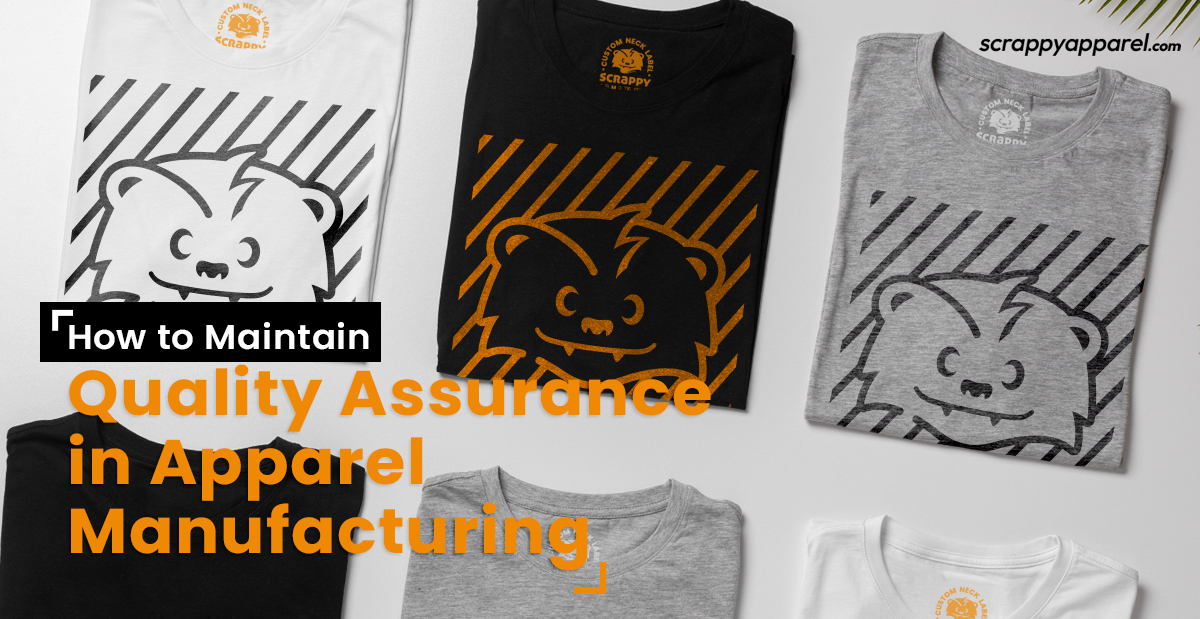How to Maintain Quality Assurance in Apparel Manufacturing
If you’re selling apparel at a premium price, your customers will expect quality.
As the saying goes, “You get what you pay for!”
So, it’s paramount to make sure your customers will be impressed by the garments they receive from your brand.
Just think about what happens after your customer places an order…
They eagerly wait for the delivery of the garment they just ordered from your brand. They’ve been excited about this piece for weeks, and the anticipation builds as they tear open the package. The unboxing moment is filled with excitement, and they pull out the garment, expecting it to feel luxurious and well-made.
This could go one of two ways, depending on the quality of the product they receive.
In the best-case scenario, the garment exceeds their expectations. The fabric feels premium, the stitching is flawless, and the fit is perfect. Their excitement turns into brand loyalty, and they can’t wait to order from you again. They might even share their experience with friends or on social media, giving your brand invaluable word-of-mouth marketing.
However, if the garment doesn’t live up to their expectations—if the fabric feels cheap, the stitching is off, or the fit is inconsistent—their excitement turns to disappointment. Instead of keeping and cherishing the item, they’re now thinking about returning it. This damages their trust in your brand—and it also incurs extra costs due to returns and lost future sales.
So, how can you ensure that every unboxing experience is a positive one for your customers? The answer lies in implementing robust quality assurance (QA) and quality control (QC) processes throughout your manufacturing.
Today, our experts at Scrappy Apparel are here to share exactly how you can do that.
Order Premium Apparel in Bulk from Scrappy Apparel

What’s the Difference Between QA and QC?
While they share the same goal of maintaining garment quality, QA and QC focus on different aspects of the production process.
Quality Assurance
QA is a preventative, process-oriented approach that focuses on setting up systems and standards to avoid defects before production even begins. It ensures that every step of the manufacturing process follows predefined protocols, reducing the chances of errors occurring during production.
Quality assurance includes:
- Developing clear quality standards and guidelines.
- Establishing robust production processes to ensure consistency.
- Training employees on best practices to maintain quality.
- Regularly auditing processes and systems for improvement.
QA is about creating a framework that guarantees consistent quality throughout the entire production cycle.
Quality Control
QC, on the other hand, is a reactive, product-oriented approach that focuses on identifying defects in the final product. It involves inspecting garments at different stages of production to ensure they meet the quality standards set by QA.
Quality control involves:
- Inspecting raw materials for defects before production.
- Conducting in-process checks during manufacturing.
- Performing final product inspections to catch any issues before shipping.
- Identifying and addressing defects or inconsistencies in individual garments.
QC is all about checking the output—catching any mistakes or defects after production has started and ensuring that only high-quality garments reach the customer.
Establishing Quality Standards for Apparel
To ensure quality control for your apparel line, you need to establish comprehensive quality standards. These standards should cover every aspect of your products to maintain consistency and excellence.
Identifying Key Quality Metrics
Start by defining the required fabric quality, specifying the type of material, thread count, and other relevant characteristics. Set guidelines for stitching, ensuring that seams are strong, neat, and uniform across all items. Stitch consistency plays a crucial role within your line, so knowing the finer details of what enables consistency matters.
Color accuracy is another essential element. Even slight variations can significantly affect the overall look and feel of your apparel. At Scrappy Apparel, we can Pantone color match your brand colors to ensure your garment matches your guidelines.
Size consistency is equally important, with precise measurements and tolerances to guarantee that each item meets the expected fit and dimensions. Size issues are the primary reason for apparel returns, accounting for about 42% of all retail returns—according to Narvar’s 2021 State of Returns Report.
Communicating Standards to Suppliers
Once you’ve established your quality standards, it’s crucial to communicate them clearly and effectively to all parties involved in the production process. This includes manufacturers, suppliers, and your internal team.
The right manufacturing partner will not only meet your production needs but will also have their own quality control processes in place. These manufacturers understand that their reputation is tied to the quality of the products they deliver, and they take active measures to prevent defects, reduce waste, and ensure your satisfaction.

Types of Quality Control Measures Manufacturers Should Take
Is your manufacturer implementing the right QC techniques? Here are important ones to look for:
QC Checks
To ensure the highest standards, apparel manufacturers must implement rigorous quality assurance processes that maintain consistency across all products. These key steps include:
- Material Inspection: Checking the quality of raw materials before production begins to ensure that only premium materials are used.
- In-Process Quality Checks: Conducting regular inspections during the manufacturing process to identify and address defects early, minimizing rework and waste.
- Final Product Inspection: Performing a thorough examination of finished garments before packaging and shipping to confirm that they meet the required standards.
Retail-Ready Standards
Manufacturers should aim for retail-quality excellence in every garment. This involves:
- Fit and Sizing Consistency: Ensuring that all garments adhere to specified measurements, providing a reliable fit for customers.
- Color Matching: Verifying that colors are consistent across all garments and match the approved samples, avoiding any visual discrepancies.
- Print Quality Control: For garments with screen printing or sublimation, checking the clarity, color vibrancy, and durability of prints to guarantee long-lasting quality.
End-to-End Oversight
Quality control must extend throughout the entire production process, from sourcing to delivery. This includes:
- Supply Chain Monitoring: Overseeing quality control from the raw material sourcing stage through to the final delivery of the finished product, ensuring consistency and reliability.
- Vendor Quality Management: When working with multiple vendors, ensuring that all vendors meet the same high-quality standards to maintain uniformity in the final product.
Guess What? Scrappy Apparel Provides All These Quality Control Measures for Our Partners!
At Scrappy, we understand that quality is everything when it comes to building a strong, trusted brand. That’s why our approach to custom apparel manufacturing and fulfillment is designed to exceed your expectations at every turn.
Our stringent QC processes catch any imperfections before they reach your customers. Each garment undergoes thorough inspections, ensuring retail-ready excellence from fit and sizing consistency to flawless printing quality. We also provide consistency across all product lines—whether it’s t-shirts, hoodies, or hats—guaranteeing that your customers are always satisfied.
Our apparel-first, end-to-end supply chain management solutions promise quality at every stage of the process. Every product will align with your brand’s quality standards and reach your customers—on time, in perfect condition.
Fewer returns, higher satisfaction, and a stronger brand reputation are all within reach when you choose Scrappy Apparel as your manufacturing and fulfillment partner.
Ready to Begin Your Project?




